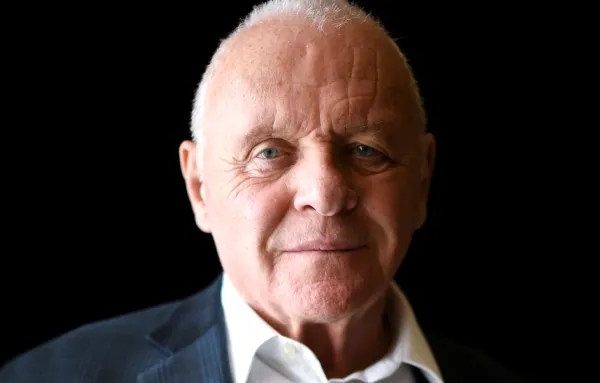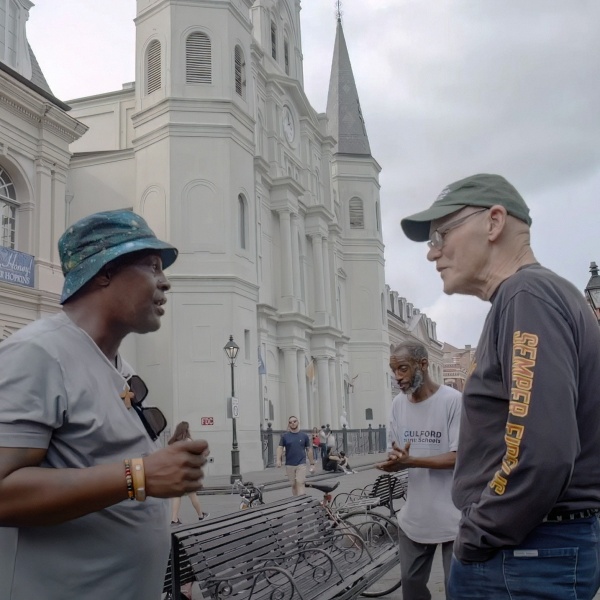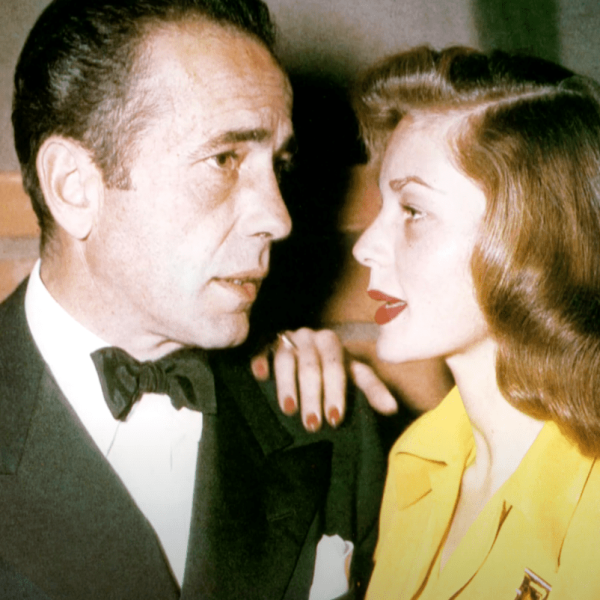On January 10, 2013, The New York Times published a story by Stephen Rodrick titled “Here Is What Happens When You Cast Lindsay Lohan in Your Movie.” The article was a detailed account of what happened when director Paul Schrader, writer Bret Easton Ellis, and producer Braxton Pope teamed up to make “The Canyons,” a low-budget feature starring troubled former child star Lindsay Lohan and porn actor James Deen that was in danger of falling apart nearly every day thanks to Lohan’s erratic behavior. The piece was thorough, well-researched, and extremely entertaining. It also had nothing to do with the actual movie that emerged from the chaos.
Nevertheless, by the time “The Canyons” was released in August 2013 it was clear that the article and the gossip had created a sense that Schrader’s film couldn’t possibly be any good — how could the conditions described by Rodrick lead to anything coherent? (Never mind that anyone who’s ever been on a movie set knows there’s no correlation between the ease and pleasure with which a picture is made and the quality of the final product; if there was, “The Cannonball Run” would be a better movie than “Apocalypse Now.”) Although there were a handful of partisans — Richard Brody in The New Yorker, Kent Jones in Film Comment — the critical consensus was that “The Canyons” was a trashy, imbecilic bore, a bad soap opera by a once great director who had hit a new low.
The problem is that the critics were reviewing the movie that they thought they were going to see rather than the one that Schrader made: a thoughtful, rigorous, and deeply unsettling poison pen letter to Hollywood that served as a fascinating companion piece to Schrader’s influential 1980 hit “American Gigolo” and, for the first time, found a workable cinematic corollary to Ellis’ literary voice.

The connection between “American Gigolo” and Ellis is not coincidental and cannot be overstated. A teenage Ellis saw the movie on its initial theatrical release in a Westwood theater mere blocks from where Richard Gere’s character struts throughout much of the film, and its influence is pervasive from his first novel, “Less Than Zero,” to his most recent, “The Shards.” (To promote “The Shards,” Ellis even presented a screening of “American Gigolo” at NYC’s Metrograph.) There are superficial references to “American Gigolo” throughout Ellis’ work (the male prostitute in “Zero” is named Julian after Gere’s character in “Gigolo”; the narrator of “The Shards” goes to see the movie in Westwood just like Ellis did, etc.), but its presence is felt in deeper, more philosophical ways as well. Ellis’ entire tone and way of looking at Los Angeles seem to come from “American Gigolo,” a film that’s simultaneously seductive and chilly; there’s an odd blend of distancing effects with the visceral kick of salacious sex-and-violence-infused material that gives both “American Gigolo” and Ellis’ entire oeuvre their resonance.
This quality of seeing how much an audience can be placed both inside and outside the narrative is not only a specialty of Ellis and Schrader’s but a high percentage of the truly great film directors of the 20th century; a similar tension between self-consciousness and emotional involvement can be found in the best work of Alfred Hitchcock, Martin Scorsese, Stanley Kubrick, Ingmar Bergman, and several dozen other filmmakers who created great art out of trying to see how aware they could make the audience of their technique without sacrificing the effects of that technique. In the best of these directors’ films — “Vertigo,” “Taxi Driver,” “Barry Lyndon,” “Persona” — the emotional impact is not only not lessened by that awareness, it’s somehow intensified by it.
Ellis’ novels have a similar quality; most of them feature a narrator or narrators who tell the story from an ironic, analytical perspective that may or may not be reliable and may or may not truly comprehend the events they’re trying to describe. It’s the literary equivalent of Schrader’s visual style in “American Gigolo,” in which the camera narrating the story detaches itself from Julian’s point of view to provide its own commentary; the movements aren’t “motivated” in the classical sense (something Schrader shares in common with the other modernist directors listed above), and thus provide a layer of meaning beyond what’s already there in the narrative. Julian Kay’s story is about one thing (his life as a paid escort and how it unravels when he’s framed for murder), but the movie “American Gigolo” is about something else: the sensual appeal and moral corrosion of Los Angeles, detailed in every gliding dolly shot and each of cinematographer John Bailey’s self-consciously stylized lighting effects.
“The Canyons” is about that sensual appeal and moral corrosion as well, minus the redemption that “American Gigolo” ultimately attempts to portray. It’s a film of what Schrader calls the “post-theatrical” era, an age in which a movie like “American Gigolo” — a well-resourced personal film filled with rough edges and idiosyncratic alienating effects — would be unlikely to ever be financed and released by a major studio, and even less likely to become a mainstream hit the way that “Gigolo” did. Thus the dream of Los Angeles is even less viable here than it was in “Gigolo,” a point Schrader makes right from the beginning with a credit sequence comprised of photographs of dilapidated movie theaters. In “American Gigolo,” theaters are thriving, and part of the fun for cineastes is seeing scenes play out in front of Westwood venues playing now-classics like Walter Hill’s “The Warriors.” By the time of “The Canyons,” the Mann National in Westwood where a teenage Ellis saw “Gigolo” had been demolished, and “The Canyons” itself would find almost its entire audience at home via streaming.
One of the most interesting things about “The Canyons” is the way it forms a kind of synthesis between Schrader and Ellis that gives each of them something fresh while encapsulating their previous work. It’s an odd instance in which a director is riffing on his own previous work not necessarily of his own accord but at the behest of a collaborator; “American Gigolo” influenced Ellis, who then brings that influence and what he has added to it from his own life experience (and other influences like Joan Didion) to “The Canyons.” The result is a movie neither man could have made without the other, but which is unthinkable without either.
In terms of its basic story and structure, “The Canyons” recalls movies like “Carnal Knowledge,” “sex, lies, and videotape,” and “The Shape of Things” as an essentially four-person drama delving into the psychological and sexual power imbalances between its characters. The opening scene introduces us to the key players — an independently wealthy young producer (Deen), his girlfriend (Lohan), his assistant (Amanda Brooks), and her boyfriend (Nolan Funk) — and immediately establishes the kind of tension between self-consciousness and intimacy that will come to define the film, and that is characteristic of Schrader and Ellis’ work as a whole.

The principal players are mid-conversation at dinner, and Schrader shoots them in an odd series of reaction shots; for an uncomfortably long period (though it isn’t that long in terms of actual onscreen minutes), we never get a look at whoever is talking, just at the people they’re talking to. Adding to the bizarre effect, Schrader directs the actors to either look directly into the lens or just off to its side, so that in these reaction shots the characters seem to be reacting not only to the unseen speaker but to us, the audience. It brilliantly sets the tone and captures the unique literary qualities of Ellis’ voice in a way that none of his other cinematic adaptations have. Those movies tend to err on one side or the other, either choosing a traditional approach to emotional involvement or giving the audience so much distance that they’re let off the hook; Schrader sucks you in and pushes you away at the same time, creating the same kind of attraction-repulsion dynamic so familiar from Ellis’ best novels.
The complexities and nuances of the opening scene can only be truly appreciated on repeat viewings; once one is aware of the secrets the characters are keeping, each shot becomes densely layered with meaning. Repeat viewings also reveal the greatness of the performances, as all four actors play multiple levels at once: Throughout the film, someone is lying (or at least hiding their true motives) in any given scene, and often they’re lying to themselves most of all. The trick of “The Canyons” is that once we know all the lies, each scene allows us multiple points of entry and multiple interpretations, though ultimately the film’s most disturbing quality — and undoubtedly one of the factors in its critical evisceration given American critics’ maddening tendency to mistake depiction for endorsement — is the fact that the three main characters are all morally reprehensible to varying degrees.
This, of course, is nothing new for Ellis, and not really for Schrader either — although “American Gigolo” goes through the motions of a redemptive arc for Julian in the form of an ending cribbed from Robert Bresson, it’s the movie’s most unconvincing component. Ellis cribs from Bresson too — or, more accurately, from Bresson by way of Schrader. Toward the end of “The Canyons,” a character needs an alibi for a murder just as Julian does in “American Gigolo” and Ellis pays his most explicit homage to that film in a negotiation scene over how and by whom that alibi will be provided. The key difference is that in “Gigolo” we assume that Julian did not commit the murder (though Schrader leaves the door slightly open for the tantalizing possibility that he did). In “The Canyons” there is no doubt that James Deen’s character did commit murder and is a sociopath not far removed from Patrick Bateman in Ellis’ “American Psycho.”
This is another of the many ways in which “The Canyons” is far darker than “Gigolo”; Ellis and Schrader’s cynicism isn’t merely fashionable but a logical expression of the trajectory “The Canyons” represents. “American Gigolo” was the beginning of something; writer Chuck Klosterman accurately argues that the 1980s started with its opening credit sequence, the Blondie-scored pop aesthetic that infused dozens of movies that followed. “The Canyons” represents an ending: of Hollywood as a dream factory, of filmmaking as a viable capitalist enterprise (it’s no coincidence that Deen’s character has family money and doesn’t really need to turn a profit on his independent horror film to survive), and of an era when artists like Paul Schrader and Bret Easton Ellis could be part of the cultural conversation.

Both “American Gigolo” and “The Canyons” are valuable as anthropological artifacts, tours through the various social strata of Los Angeles and the restaurants where the upper class makes pit stops between making money and having sex. Yet “The Canyons” was one of the last movies needed to serve this function; it’s a transitional film between the age of cinema and the age of social media, as Instagram now does what “American Gigolo” and “The Canyons” do. The fact that Schrader and Ellis’ film is a symptom of this transition as a movie financed and marketed via social media and also shares aesthetic properties with Instagram (in the form of its antiseptic digital pixels as opposed to the warmer, fuzzy celluloid of “American Gigolo”) is another reason it was underrated in its moment; a film about shallowness was improperly categorized as a shallow film.
As in “American Gigolo,” however, the repercussions of the shallow characters’ behavior are the stuff of genuine tragedy; by the time “The Canyons” ends, most of the principals have literal or figurative blood on their hands, and it’s not presented as a joke or an intellectual game. The final shot, in which one of the characters looks straight into the camera, echoes those reaction shots from the opening. Only this time there’s no one on the other side; the character is in a room, alone, and we’re the only ones to receive that look of…remorse? Apathy? Heartbreak? Resignation? It’s hard to know, and Ellis and Schrader’s refusal of easy or obvious conclusions is one reason “The Canyons” lingers.
The paradox of the film’s bleak pronouncement that movies are dead (stated explicitly in a conversation between Lohan and Brooks) is that it gave Schrader new life as a filmmaker and indirectly yielded at least one of his greatest films. The low-budget digital methodology Schrader employed on “The Canyons” clearly liberated the director, who has become surprisingly productive in the years since by taking advantage of inexpensive technology to make a series of exquisitely crafted personal statements. After purging his most anarchistic impulses with 2016’s gonzo crime flick “Dog Eat Dog,” Schrader made a trilogy of moral and spiritual meditations (“First Reformed,” “The Card Counter,” “The Master Gardener”) that felt like the purest expressions of his sensibility since “Light Sleeper” in 1992. In the case of “First Reformed,” he created an unadulterated masterpiece, a movie in which the economy of means yielded a depth of expression comparable to the films made when Schrader was first forging his reputation. In the end, the most convincing argument against Schrader’s claim in “The Canyons” that movies are dead is a movie made by Schrader himself.
“The Canyons” is currently streaming on Tubi and AMC+ and is available to rent or buy on assorted streaming platforms.




